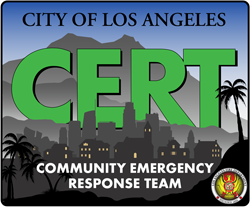CERT Flashcards
Unit 3 – Medical Part 1
Rapid and shallow breathing
Capillary refill of greater than 2 seconds
Failure to follow simple commands, such as “Squeeze my hand”
CERT personnel are trained to be part of disaster medical operations and to provide:
When blood doesn’t circulate, oxygen and other nutrients are not carried to tissues and organs.
Blood vessels begin to close and organs are damaged and, if left untreated, will shut down completely.
Shock can worsen very rapidly.
Remaining in shock will lead to the death of:Cells
Tissues
Entire organs
Blood coming from an artery will spurt.
Triage pitfalls include:
No team plan, organization, or goal
Indecisive leadership
Too much focus on one injury
Treatment (rather than triage) performed
Opening the airway
Controlling excessive bleeding
Treating for shock
Blood coming from capillaries will ooze.
Begin by calling out, “Community Emergency Response Team. If you can walk, come to the sound of my voice.” Speak loudly and firmly.
If there are survivors who are ambulatory, tag them M (Minor) and direct them to a designated location.This procedure helps to conserve supplies and saves time. The bandage maintains the direct pressure needed to stop the bleeding.
CERT members: continue to assess the victim’s status.
If the victim’s limb is turning blue or becoming numb below the bandage, then it should be loosened.
Rescuers must wear all safety equipment, including non-latex exam gloves, goggles, a helmet, and an N95 mask when examining victims and should try to change gloves between victims.
Because of limited supplies, it may not be possible to use a new pair of gloves for every victim. If this is the case, gloves may be sterilized between treating victims using 1 part bleach to 10 parts water.Phase 1: Death within minutes as a result of overwhelming and irreversible damage to vital organs
Phase 2: Death within several hours as a result of excessive bleeding
Phase 3: Death in several days or weeks as a result of infection or multiple organ failure (i.e., complications from an injury)
How long it takes for the color to return to the skin. Also called the “blanch test.”
A good place to do the blanch test is the palm of one hand. Sometimes, a nail bed is used.
You should see the color return to the tested area within 2 seconds.
Why or why not?
Blood coming from a vein will flow.
Direct Pressure
Elevation
Pressure Points
Direct pressure and elevation will control bleeding in 95% of cases.brachial point (bend of the elbow) for bleeding in the arm
femoral point (inner thigh) for bleeding in the leg
popliteal point (back of the knee) for bleeding in the lower leg.
The correct pressure point is between the wound and the heart.
Identify the dead and those who are too severely injured to be saved
Send those with relatively minor injuries and wounds to a holding area to await treatment
Identify those who would die from life-threatening injuries and treat them immediately
The term for this is Triage.
